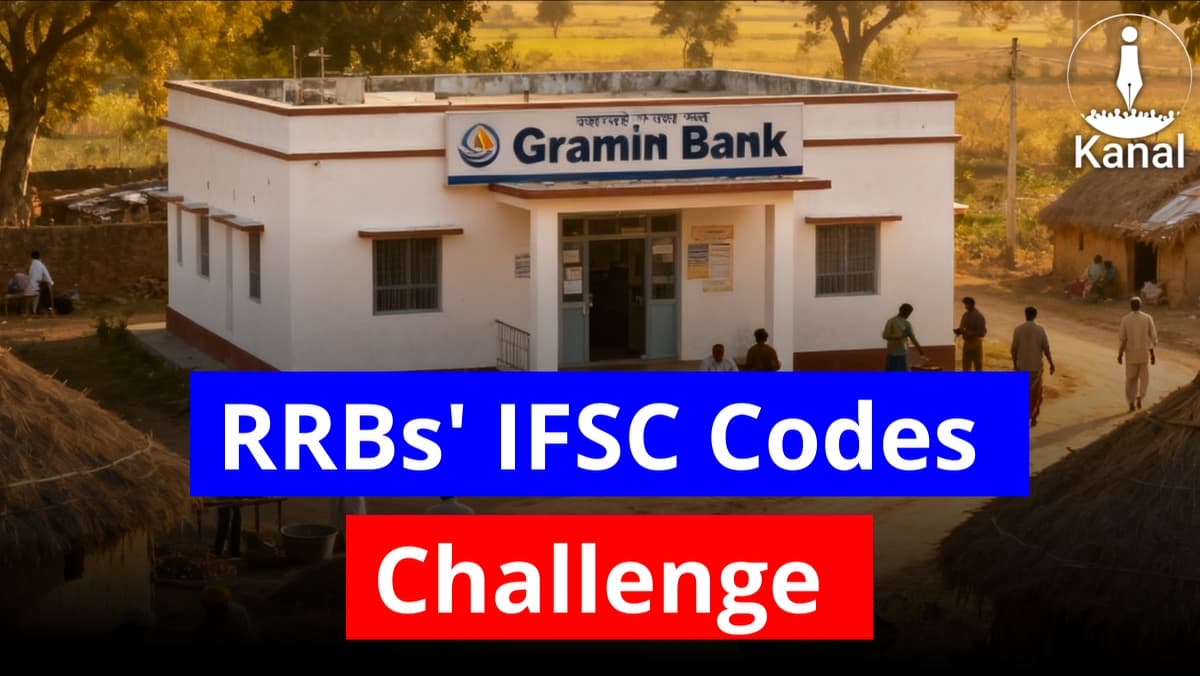One IFSC, Many Hurdles: Do Regional Rural Banks Struggle for Digital Independence?
17 Regional Rural Banks lack independent branch-wise IFSC codes, causing delays, inefficiencies, and dependence on sponsor banks.

Author: Saurav Kumar
Published: October 14, 2025
Nearly five decades after their inception, Regional Rural Banks (RRBs) remain the backbone of India’s rural credit system. Yet, in an era where digital transactions define efficiency, 17 out of 28 RRBs — including those in Uttar Pradesh, Bihar, Madhya Pradesh, West Bengal, and Tamil Nadu — still function without independent branch-level IFSC codes. The outcome, as per banking officials and customer experiences, has been delayed payments, reconciliation issues, and financial inefficiencies.
Advertisement
Dependence on Sponsor Banks
Advertisement
While all commercial and public sector banks enjoy unique, branch-specific IFSC codes that enable real-time settlements, a large number of RRBs operate as “sub-members” of their sponsor banks. This means all NEFT/RTGS transactions — whether inter-bank or even some intra-bank — must first route through the sponsor bank’s system before reaching the end customer.
Expressing concern over the issue, AIRRBEA Secretary General S. Venkateswar Reddy told Kanal, “Take Uttar Pradesh Gramin Bank (UPGB) for example — with 4330 branches, it still operates under a single IFSC code, routing every transaction through its sponsor bank. If branches had their own IFSC codes, settlements would go directly through the RBI. Instead, RRBs remain dependent on sponsor banks, which effectively keeps them subordinate in the digital hierarchy.”
Banks Without Independent IFSC Codes
According to confirmed sources, the following 17 RRBs currently operate without independent branch-wise IFSC codes and continue to depend on their sponsor banks for transaction routing:
- Bihar Gramin Bank
- Jharkhand Rajya Gramin Bank
- Andhra Pradesh Grameena Bank
- West Bengal Gramin Bank
- Arunachal Pradesh Rural Bank
- Uttar Pradesh Gramin Bank
- Tamil Nadu Grama Bank
- Sarva Haryana Gramin Bank
- Jammu and Kashmir Grameen Bank
- Tripura Gramin Bank
- Madhya Pradesh Gramin Bank
- Assam Gramin Vikash Bank
- Uttarakhand Gramin Bank
- Manipur Rural Bank
- Mizoram Rural Bank
- Himachal Pradesh Gramin Bank
- Punjab Gramin Bank
This list covers nearly two-thirds of all RRBs, many of which operate thousands of branches across hundreds of districts.
Customer Inconvenience and Systemic Challenges
As per an employee of West Bengal Gramin Bank (WBGB), “For customers across 930 branches, the absence of branch-level IFSC codes translates into longer settlement times for NEFT/RTGS transfers and delays in refunds or failed transactions. It should be better compared to customers of commercial banks.”
In Tamil Nadu Grama Bank (TNGB), the challenge is no different. Payments are often slower, causing inconvenience and frustration among customers. “If each branch had its own IFSC code, transactions would be smoother and time-bound,” said Anto Guilbert, a TNGB employee. “Internet banking in RRBs must match the efficiency of our sponsor banks — but right now, we depend on them. The fact that our 673 branches still operate under the sponsor bank’s IFSC makes them both our competitors and our masters.”
As similar concerns echo from other regions, customers face comparable delays and transaction issues.
“I transferred money from my Gramin Bank account, but it took two days to reflect — my supplier lost trust,” said a vegetable businessman to Kanal hailing from Muzaffarpur region of Bihar. “Gramin banks need to upgrade this service in comparison to Public Sector Banks”
The Need for Digital Autonomy
Experts argue that the continued use of a single IFSC code per bank contradicts the Reserve Bank of India’s (RBI) emphasis on digital traceability, cybersecurity, and operational independence. Each branch-specific code allows for better monitoring, fraud detection, and automated accounting — all critical in a high-volume digital ecosystem.
“RRBs have grown in business and scale, yet their digital backbone remains tied to sponsor banks. They need to be de-linked from sponsor banks,” said a senior officer of Karnataka Grameena Bank. “If the government envisions ‘Digital Grameen Bharat’, RRBs must be digitally empowered — and that begins with branch-level IFSC codes.”
The Road Ahead
The “One State, One RRB” amalgamation policy aimed to streamline governance and improve efficiency. However, observers note that digital and operational autonomy will be essential to fully realise the goals of this structural reform.
The pressing questions now are:
- Will NABARD and the Ministry of Finance mandate unique IFSC codes for all RRB branches?
- Can RRBs be given independent settlement memberships within payment systems like NEFT and RTGS?
- And most importantly, when will rural customers experience the same real-time banking convenience as their urban commercial bank counterparts?
As RRBs celebrate 50 years of service to rural India, their next leap must be digital independence. For millions of customers and employees, granting branch-level IFSC codes could help bridge the gap between delayed settlements and real-time digital banking access for millions.
Advertisement
No comments yet.
